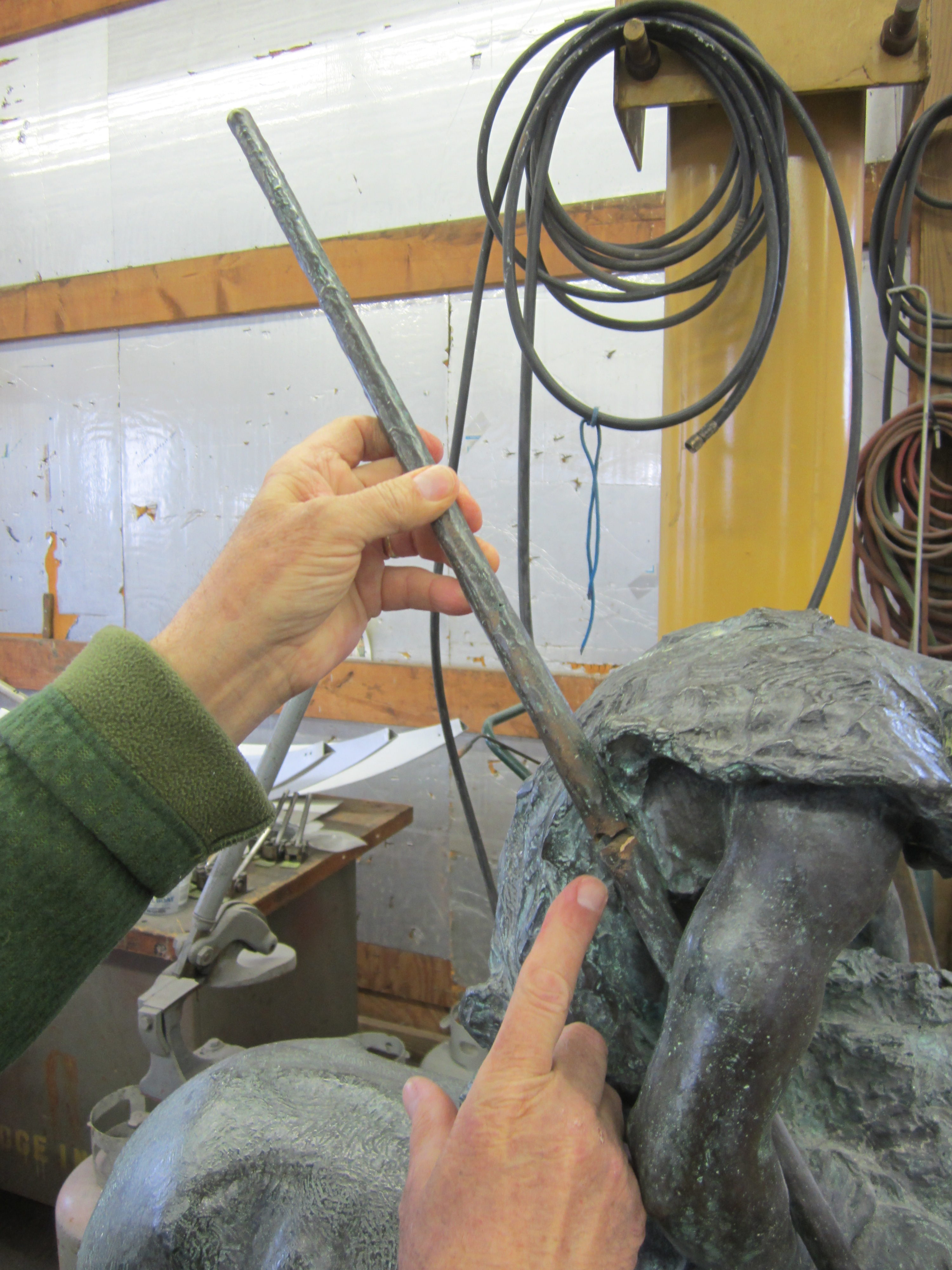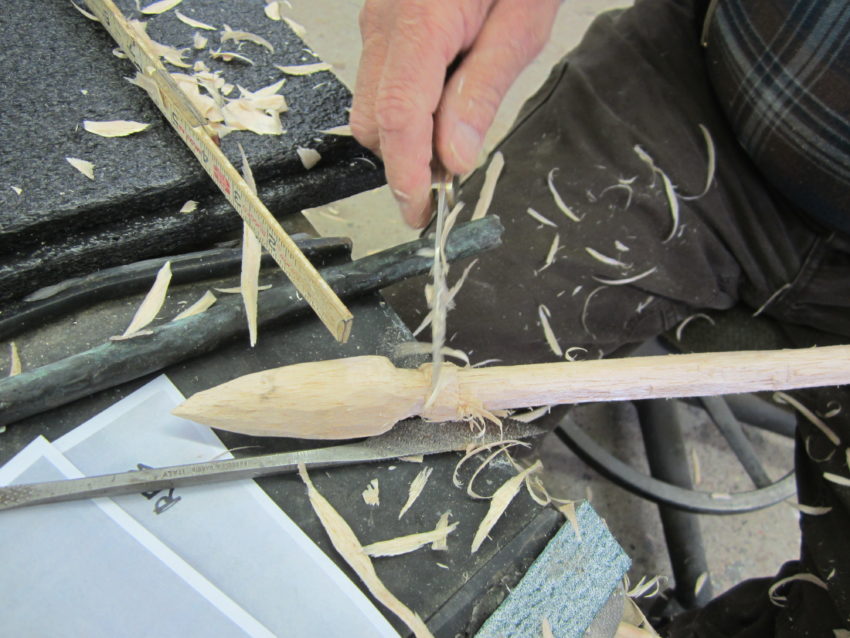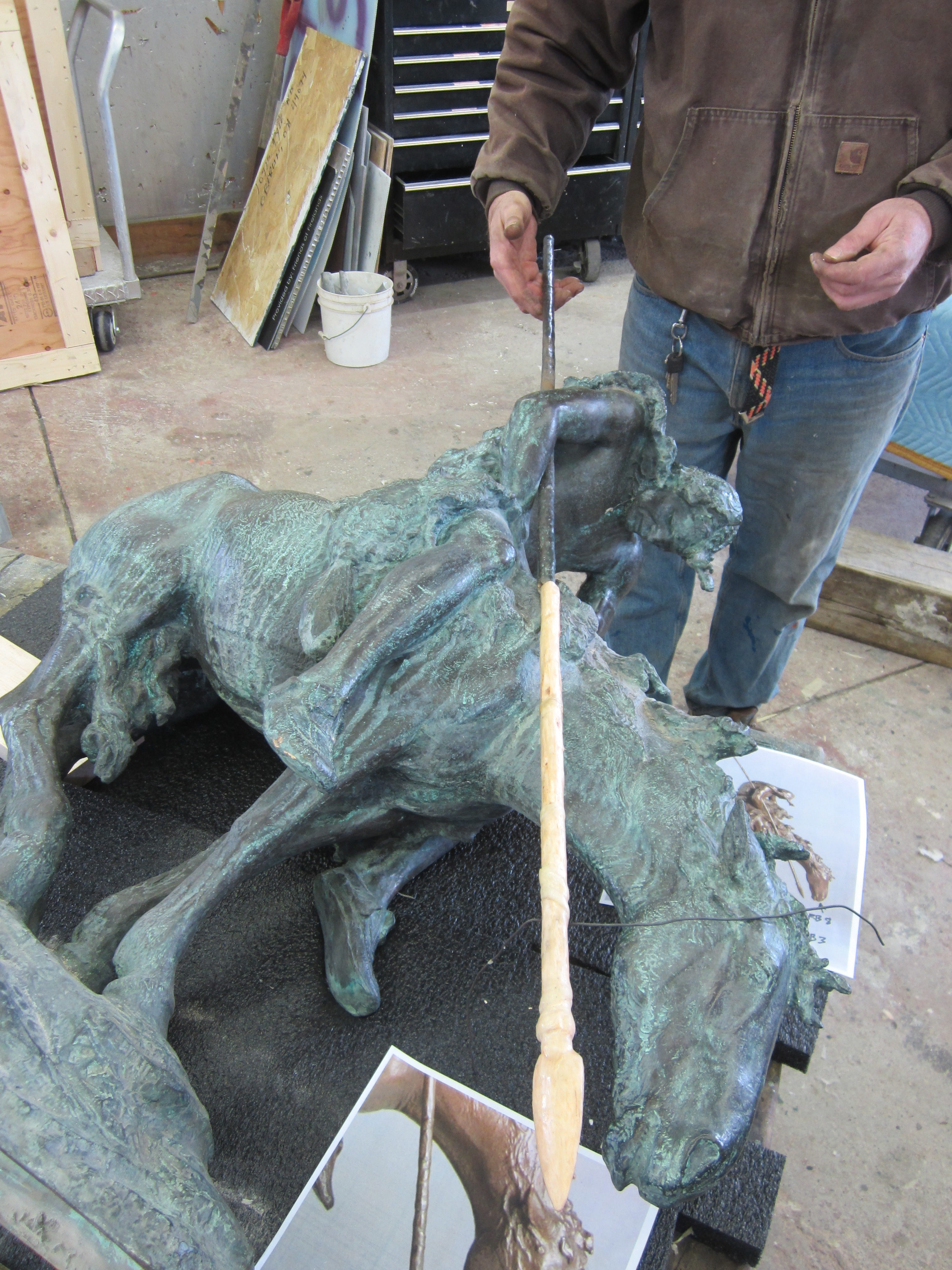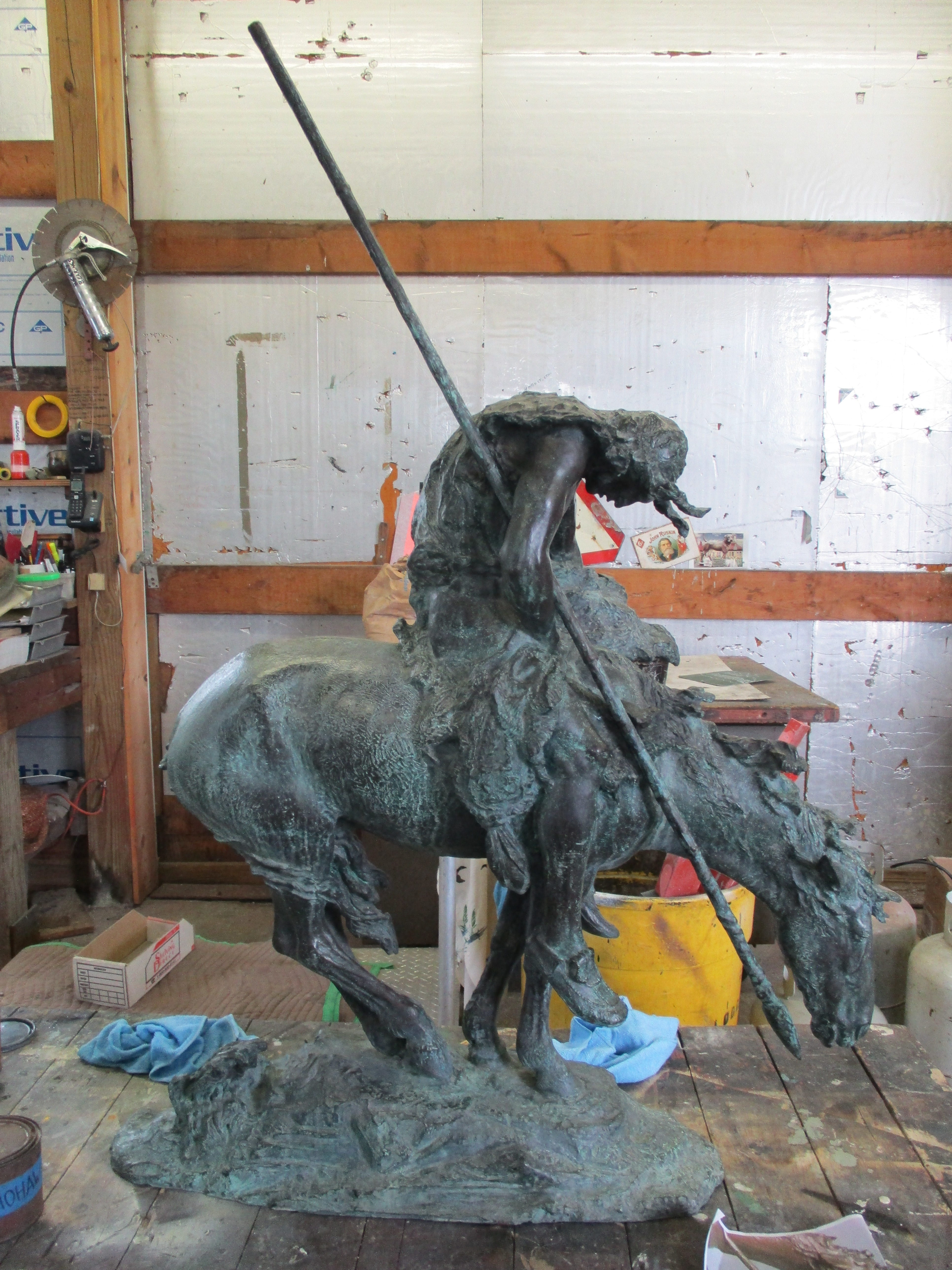End of the Trail by James Earle Fraser is an iconic work in American art. The sculpture depicts an American Indian clutching his spear riding bareback on an exhausted horse. The artwork is an embodiment of Native Americans being driven from their homelands by settlers, essentially to the “end of the trail”, or Pacific Coast. It has been reproduced in many forms from smaller versions to paintings to popular items like t-shirts and decals and posters.
One of the original bronze cast was recently sent to McKay Lodge Conservation Laboratory just outside of Cleveland, Ohio. At the conservation lab, Senior Conservator of Sculpture Thomas Podnar completed a conservation treatment of End of the Trail by James Earle Fraser.

The casting had recently sustained physical damage. Despite the durability of bronze, and sometimes the best efforts of those who care for artwork, damage can still occur. In this case, a conservation treatment of the End of the Trail by Fraser became necessary when components of the sculpture were broken by visitors climbing on the artwork.
Conservator Podnar examined the bronze sculpture before treatment. The lower section of the spear cradled in the figure’s proper right arm was broken and missing. The upper section of the spear was broken and bent. Recreating missing components to match the original from historic images would be required for the conservation treatment of the End of the Trail.
Conservator Podnar made careful measurements since he would need to re-fabricate the missing parts. He first sculpted the missing section of the spear from a soft wood, texturing it with wax to match the rest of the original spear. The positive pattern was then cast offsite using the lost-wax method. You can learn more about the lost-wax casting method here.


The bent piece of the spear was then straightened into its original position. The new piece and existing spear components were then reattached the to the original sculpture. In order the complete the conservation treatment of the End of the Trail by Fraser, the repair was patinated to match the existing patina. After treatment, the sculpture is whole once more.

James Earle Fraser was born in Minnesota in 1876. In the early part of his life, Fraser moved to South Dakota. It was there in his youth that he interacted with other Sioux children, and began to carve slabs of stone from a local quarry. He studied abroad, and eventually became an assistant to Augustus Saint-Gaudens.
Though he is arguably most famous for his design of the Buffalo nickel and the End of the Trail, Fraser created many sculptures for the Supreme Court, Archives, Department of Commerce buildings, and historical, presidential, and military portraits. He spent the rest of his days with his wife and fellow artist, Laura Gardin, in Connecticut until he died in 1953.
